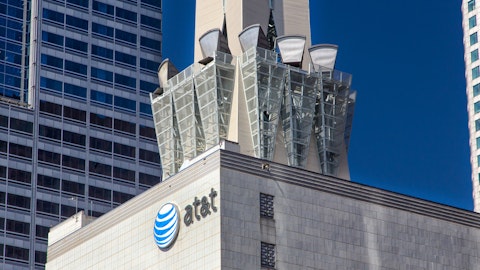I usually look at dividend growth stocks and their dividend increases every week, as part of my portfolio monitoring process. In this weekly review, I have highlighted four dividend champions, which recently raised distributions. The common denominator behind each of these dividend champions is that they seem attractively valued today.
The reason why these companies appear attractively valued in an otherwise expensive marketplace for securities, is because market participants have doubts about each of these companies and their earnings prospects. It is up to the enterprising dividend investor to analyze those opportunities, and determine if they are appropriate additions for their income portfolios.

elwynn/Shutterstock.com
As a rule, I try to invest at attractive entry valuations (1) in companies that have a track record of annual dividend increases, which is fueled by earnings growth. The goal is to buy such a company without overpaying for it, to hold on to it, as it earns more, and pays me a dividend to hold to it.
The four companies in question include:
AT&T Inc. (NYSE:T) provides telecommunications and digital entertainment services. The company operates through four segments: Business Solutions, Entertainment Group, Consumer Mobility, and International. The company raised its quarterly dividend by 2.10% to 49 cents/share. This marked the 33rd consecutive annual dividend increase for this dividend champion. Over the past decade, AT&T has managed to raise dividends at an average annual rate of 3.80%/year. Dividend growth has been slowing down even further in the past five years to a little over 2%/year. Currently, the stock looks attractively valued at 12.80 times forward earnings and an yield of 5.40%. Check my analysis of AT&T for more information.
The stock has been selling off, after announcing its intention to acquire Time Warner Inc (NYSE:TWX) for cash and stock. Some investors are nervous, because AT&T has been on an acquisition spree recently, and had announced that it was going to focus on reducing debt. Others are concerned that this acquisition is a sign of a bubble in the debt markets, fueled by low interest rates. A third group is comparing the AT&T acquisition of Time Warner with the acquisition of Time Warner by America Online at the height of the dot-com bubble in 2000.
That last deal was one of the worst in history. The difference however is that both AT&T and Time Warner have reasonable valuations today. In contrast, America Online was selling at something like hundreds of times earnings in 2000. This is the main reason why the AOL, Inc. (NYSE:AOL) stock price collapsed after it acquired Time Warner – it was simply overvalued. I could argue that AT&T at 12..80 times forward earnings and Time Warner at 16.30-times forward earnings are not really that expensive.
The move by AT&T Inc. (NYSE:T) is likely caused by the company’s desire to diversify its income streams beyond the highly competitive US telecom market. While AT&T and Verizon Communications Inc. (NYSE:VZ) have enjoyed high profitability, as their next two competitors were struggling, competition seems to be intensifying. This could likely put pressure on profits for a sector that requires a lot in capital spending merely to keep up with the technology.
I have not been very bullish on the telecom sector as a whole due to the competitive pressure discussed before. I do hold shares in Verizon and Vodafone Group Plc (ADR) (NASDAQ:VOD). I have held on some AT&T shares from time to time, mostly because I occasionally sell puts (2) on the stock. If those puts are ever exercised, I obtain the stock and then immediately sell covered calls against the stock so that I get rid of it. I have done well with this strategy, which is perfect for a stock that I do not expect to move much over time.
The fact that the company has been unable to grow earnings per share has meant that future growth in dividends will be limited at best. The lack of earnings growth, coupled with a high dividend payout ratio, and an increase in debt really makes me think twice about the sustainability of the dividend on a go forward basis. There is always the risk that the synergies promised when a deal is announced do not materialize, because integrating business cultures, different systems and different business models is very difficult to achieve.
That being said, AT&T has done a good job integrating acquisitions since it was spun-off as SBC Communications back in 1983 from the original Ma-Bell AT&T. The current AT&T was originally known as SBC Communications, and it was formed in 1983, when the original telephone monopoly AT&T spun-off seven of its subsidiaries. After a series of mergers and acquisitions, SBC Communications acquired AT&T a decade or so ago, and then changed its name to AT&T. Therefore I do have high hopes that the deal stands a higher chance of achieving earnings improvement if it is approved in its current form. While AT&T and Time Warner estimate the deal to be completed by 2017, there is still a high likelihood that the US Government will block that acquisition. If the deal doesn’t go through, the risk of a dividend cut will be much lower in my opinion.
All of that being said, I find the stock to be attractively valued at 12.80 times earnings. I find the forward payout ratio of 69% to be a little high, though I still think that the dividend is sustainable as long as management does not let debt get out of control. Given the fact that everyone is expecting lousy returns from the US stock market over the next decade, and the lack of earnings growth for major US corporations as a whole, AT&T could deliver a 5.40% return to shareholders even if earnings per share never increased, and the stock price stayed stagnant forever.
That return would be generated by mere collecting of the generous 5.40% dividend yield, as long as the dividend is maintained. In fact, I may turn even more bullish on AT&T if that acquisition of Time Warner does not close, because there will be less new debt on the books, and we also won’t have to worry about the dillutive effect of new shares that AT&T Inc. (NYSE:T) will have to pay high dividends on.
Follow At&T Inc. (NYSE:T)
Follow At&T Inc. (NYSE:T)
Receive real-time insider trading and news alerts





